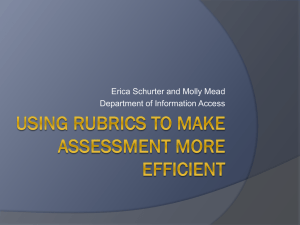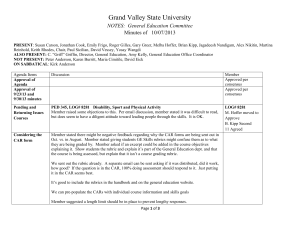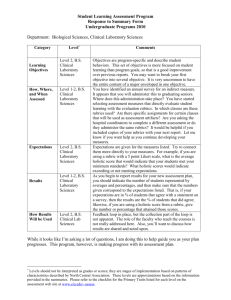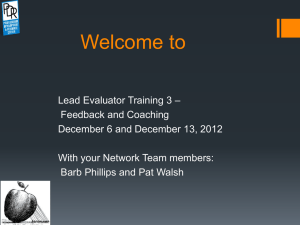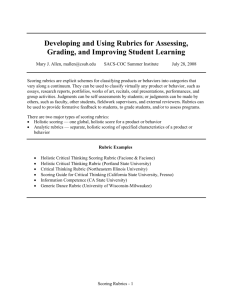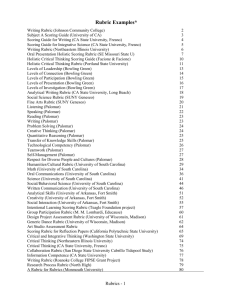Speaking Tips Scripts
advertisement
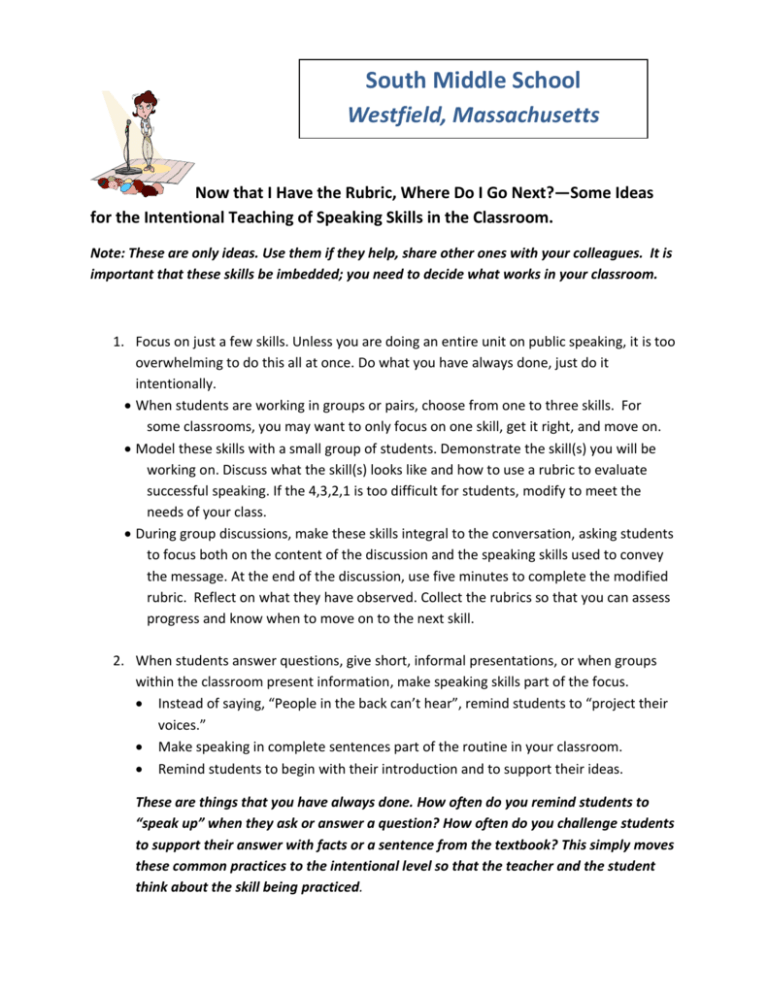
South Middle School Westfield, Massachusetts Now that I Have the Rubric, Where Do I Go Next?—Some Ideas for the Intentional Teaching of Speaking Skills in the Classroom. Note: These are only ideas. Use them if they help, share other ones with your colleagues. It is important that these skills be imbedded; you need to decide what works in your classroom. 1. Focus on just a few skills. Unless you are doing an entire unit on public speaking, it is too overwhelming to do this all at once. Do what you have always done, just do it intentionally. When students are working in groups or pairs, choose from one to three skills. For some classrooms, you may want to only focus on one skill, get it right, and move on. Model these skills with a small group of students. Demonstrate the skill(s) you will be working on. Discuss what the skill(s) looks like and how to use a rubric to evaluate successful speaking. If the 4,3,2,1 is too difficult for students, modify to meet the needs of your class. During group discussions, make these skills integral to the conversation, asking students to focus both on the content of the discussion and the speaking skills used to convey the message. At the end of the discussion, use five minutes to complete the modified rubric. Reflect on what they have observed. Collect the rubrics so that you can assess progress and know when to move on to the next skill. 2. When students answer questions, give short, informal presentations, or when groups within the classroom present information, make speaking skills part of the focus. Instead of saying, “People in the back can’t hear”, remind students to “project their voices.” Make speaking in complete sentences part of the routine in your classroom. Remind students to begin with their introduction and to support their ideas. These are things that you have always done. How often do you remind students to “speak up” when they ask or answer a question? How often do you challenge students to support their answer with facts or a sentence from the textbook? This simply moves these common practices to the intentional level so that the teacher and the student think about the skill being practiced. 3. As these skills become familiar and natural to students, then you may want to move to more formal presentations. For some classes and some grade levels, this may not occur until spring. This does not mean students will not be presenting prior to spring in your classroom; it means that until many of the skills have been introduced and practiced, presentations may still only focus on some skills and a limited rubric. As with any content area, you need to build a skill base before you move to the next level. When you feel the students are ready: Introduce the formal rubric that you will be using. Point out that it is a compilation of the skills with which they are now familiar. Have students practice with the rubric. Show a video clip of a speaker and have them rate the speaker. This helps students gain the perspective of the evaluator. Choose the weight that you want to place on the speaking skills. If these skills do not carry significant weight in your evaluative process, students may not understand their importance. It is often helpful to explain to students that all of their hard work is not appreciated if the audience is not engaged and does not understand the message. How you weigh the skills against the content depends upon the assignment and your professional judgment; however, once these skills have been taught and practiced, they need to become part of your evaluation of student work. Depending upon the class and the assignment, you may be the only evaluator in the room with the rubric. On the other hand, the audience may also have the rubric , evaluate the presentation, and turn in the rubrics to the teacher. Some teachers compile the rubrics and give them to the speaker as part of the audience feedback. Some teachers use them as reference sheets for class discussion following the speech. The advantage of giving rubrics to the audience is that when these students get up to speak, they are very aware of what it is that evaluator is looking for in terms of skillful speaking and are as thoughtful and intentional about these skills as they are about the content of their material. Just a reminder—these are speaking skills, not content rubrics. Many teachers combine the two, using content or assignment specific rubrics to evaluate the assignment and the speaking rubric to evaluate the manner in which the content was communicated.

